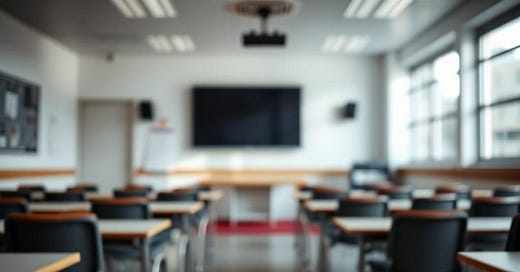When STEM Education Faces Its Biggest Crisis, We're Dismantling Our Best Safety Net
As STEM funding faces historic cuts, we're dismantling the educational infrastructure that kept students learning during COVID

Author’s Note (2025): As someone who’s worked in journalism and public media, I keep seeing policy connections that often go unnoticed. Right now, two seemingly separate budget fights are combining in ways that could seriously harm American education — and hardly anyone is talking about how they intersect. My goal here is to spotlight those links and what they mean for communities.
The numbers are stark: the new federal budget slashes National Science Foundation STEM education funding by 75% to just $288 million, less than half of what we spent on science education in 1959, adjusted for inflation. As Erik Jacobson, associate professor of mathematics education at Indiana University, warned on LinkedIn: "These cuts imperil the US scientific pipeline. Tomorrow's scientists are in school today. Along with proposed restrictions on student visas, the US scientific enterprise will atrophy, starved of personnel, and American scientific leadership will wither."
But here's what makes this crisis even more dangerous: just as STEM education faces its steepest cuts in decades, we're simultaneously dismantling the broadcast infrastructure that proved essential during our last education emergency.
The Safety Net We're About to Lose
When COVID-19 forced schools into remote learning, many districts scrambled to serve students without reliable internet access. In the Lehigh Valley, like communities across the country, families had a lifeline—their local public television station.
PBS39 was among the first stations nationwide to launch comprehensive distance learning programming. We created Lehigh Valley Learns, a curriculum-aligned broadcast schedule that required nothing more than a TV antenna to access. Each grade level received 2½ hours of educational programming at the same time each day, creating structure for families navigating an unprecedented crisis.
The response was immediate and profound. One parent called to tell us how her fifth-grader, despite having no computer at home, stayed dedicated to the weekly programming because the public broadcast provided essential structure. Districts throughout the region shared our schedule with families, recognizing that broadcast television could reach students that digital platforms simply couldn't.
This wasn't charity—it was essential infrastructure. Through partnerships with the Pennsylvania Department of Education, we became a credible support system for school districts serving some of our most vulnerable communities.
The Perfect Storm We're Creating
In normal times, I would expect PBS39 and other public television stations to be strategizing with educational partners about how to address NSF funding cuts. We'd be developing new STEM programming, expanding classroom partnerships, and leveraging our unique ability to reach every household with a television.
But these aren't normal times. The White House and congressional Republicans are simultaneously pushing to eliminate funding for PBS and NPR. While that effort faces legal challenges, the threat creates an impossible situation: just as we need educational broadcasting most, we're being asked to plan our own obsolescence.
Consider what this means practically. When the next education crisis hits—and it will—school districts may face it without a key partner who can reach every student, regardless of family income or internet access. The infrastructure that proved invaluable during COVID lockdowns may simply not exist.
What We Stand to Lose
Public media's educational role extends far beyond emergency response. Unlike commercial broadcasters focused on ratings and revenue, public television stations build programming around community need. During COVID, that meant creating educational routines for families, not just content.
This capacity represents decades of institutional knowledge about educational broadcasting, relationships with state education departments, and trust within communities. Once dismantled, it won't be quickly rebuilt.
As Professor Jacobson noted, tomorrow's scientists are in school today. But if we eliminate both federal STEM education funding and the broadcast infrastructure that can support local educational initiatives, we're creating a perfect storm that will weaken American scientific leadership for generations.
What feels like a short-term political win for Republicans will become a long-term loss for everyone who depends on American innovation and scientific advancement.
What other policy connections are we missing? Let me know.
The choice is ours, but the window for making it is rapidly closing.
What other policy connections are we missing? Let me know in the comments.



